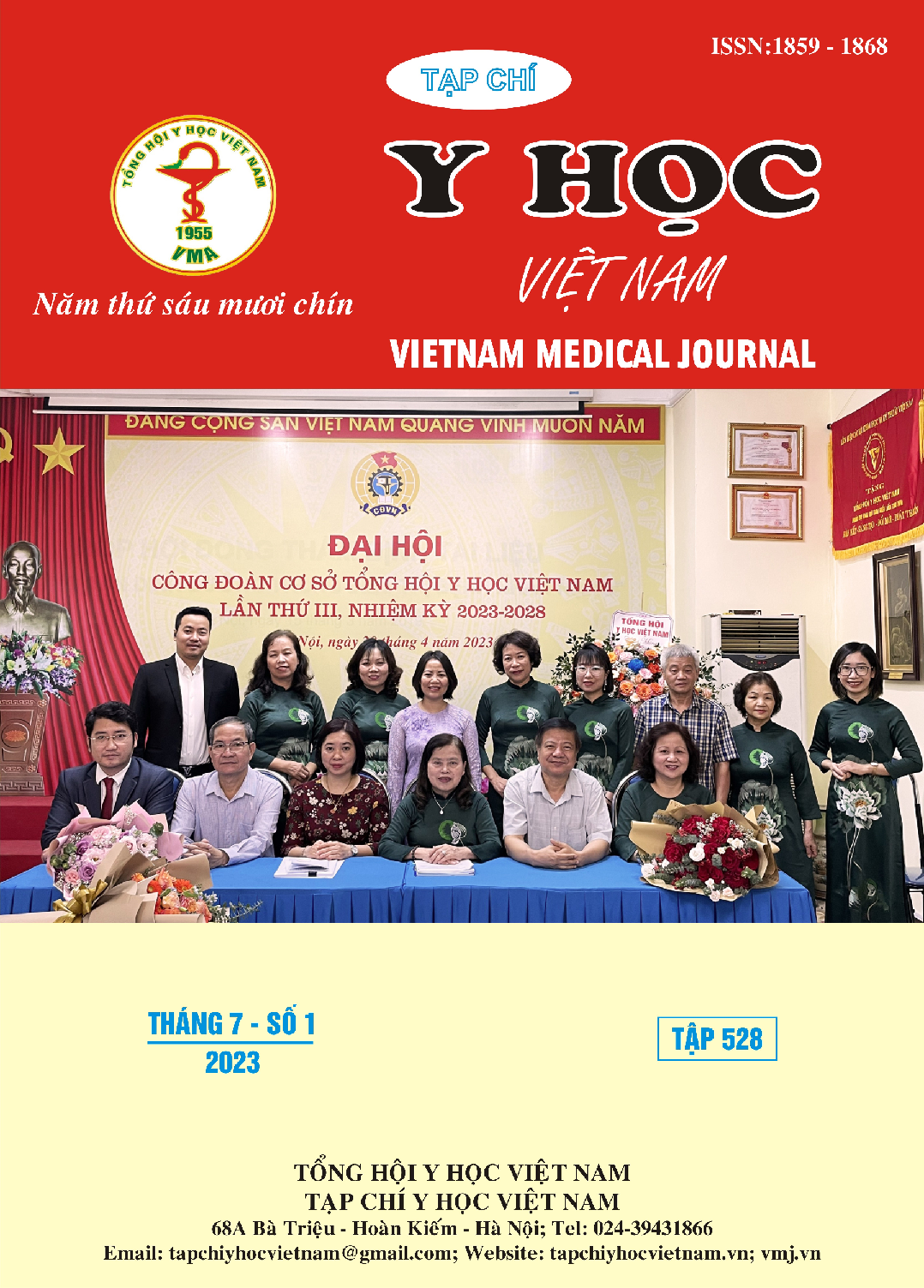ASSOCIATIONS OF FOOD SENSITIZATION WITH ATOPIC DERMATITIS SEVERITY AND EPIDERMAL LAYER IMPAIRMENT IN VIETNAMESE CHILDREN
Main Article Content
Abstract
Background: Atopic dermatitis (AD) is one of the most common allergic diseases in children aged < 5 years, which is known to be associated with food sensitization (FS). We hypothesised that sensitization to food allergens (FAs) was associated with AD severity and epidermal layer impairment in Vietnamese children with AD. Materials and methods: This was a cross-sectional study including 76 children (12-60 months) diagnosed with AD. AD severity was determined by SCORAD score. FS was evaluated by measuring serum IgE antibodies against 31 FAs using an immunoblotting method. Epidermal barrier impairment was assessed by measuring transepidermal water loss (TEWL) and stratum corneum hydration (SCH) levels using the GPSkin Barrier Pro® device. Results: 88,2% of participants were sensitized to at least one FA, including cow’s milk, egg white, beef, almond, egg yolk, and goat’s milk. Children with moderate-severe AD had lower SCH levels than those with mild AD (p < 0,05). AD children sensitized to > 10 FAs had higher TEWL, lower SCH levels, and higher SCORAD scores compared with those sensitized to 1-4 FAs and 5-10 FAs (p < 0,05). Conclusion: Most of Vietnamese children with AD were sensitized to FAs, and the most common sensitized FAs were cow’s milk, egg, beef, almond, and goat’s milk. FS was associated with AD severity and epidermal layer impairment in Vietnamese children.
Article Details
Keywords
atopic dermatitis, food sensitization, TEWL, SCH, pediatrics
References
2. Wolkerstorfer A, Wahn U, Kjellman NIM, Diepgen TL, De Longueville M, Oranje AP. Natural course of sensitization to cow’s milk and hen’s egg in childhood atopic dermatitis: ETAC study group. Clin Exp Allergy J Br Soc Allergy Clin Immunol. 2002;32(1):70-73. doi:10.1046/j.0022-0477.2001.01265.x
3. Brough HA, Nadeau KC, Sindher SB, et al. Epicutaneous sensitization in the development of food allergy: What is the evidence and how can this be prevented? Allergy. 2020;75(9):2185-2205. doi:10.1111/all.14304
4. Cartledge N, Chan S. Atopic Dermatitis and Food Allergy: A Paediatric Approach. Curr Pediatr Rev. 2018;14(3):171-179. doi:10.2174/ 1573396314666180613083616
5. Moghtaderi M, Farjadian S, Kashef S, Alyasin S, Afrasiabi M, Orooj M. Specific IgE to common food allergens in children with atopic dermatitis. Iran J Immunol IJI. 2012;9(1):32-38.
6. Yuenyongviwat A, Koosakulchai V, Treepaiboon Y, Jessadapakorn W, Sangsupawanich P. Risk factors of food sensitization in young children with atopic dermatitis. Asian Pac J Allergy Immunol. Published online January 2, 2021. doi:10.12932/AP-250820-0946
7. Sherenian MG, Kothari A, Biagini JM, et al. Sensitization to peanut, egg or pets is associated with skin barrier dysfunction in children with atopic dermatitis. Clin Exp Allergy J Br Soc Allergy Clin Immunol. 2021;51(5):666-673. doi:10.1111/ cea.13866
8. Montero-Vilchez T, Segura-Fernández-Nogueras MV, Pérez-Rodríguez I, et al. Skin Barrier Function in Psoriasis and Atopic Dermatitis: Transepidermal Water Loss and Temperature as Useful Tools to Assess Disease Severity. J Clin Med. 2021;10(2):359. doi:10.3390/jcm10020359
9. Leung DYM, Calatroni A, Zaramela LS, et al. The nonlesional skin surface distinguishes atopic dermatitis with food allergy as a unique endotype. Sci Transl Med. 2019;11(480):eaav2685. doi:10.1126/scitranslmed.aav2685


